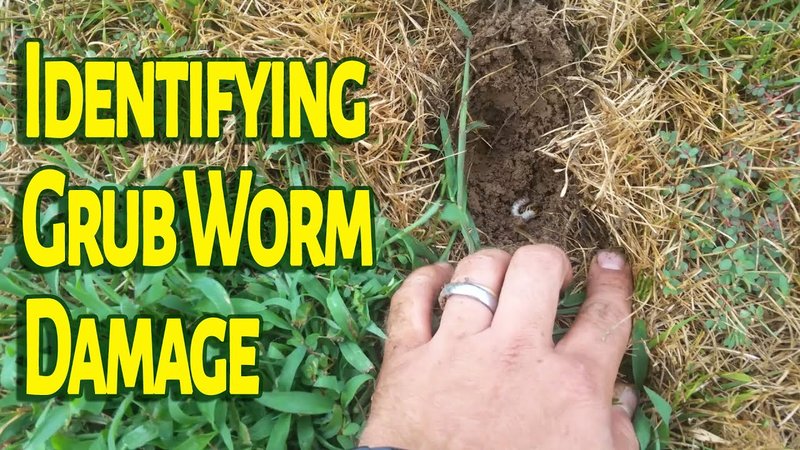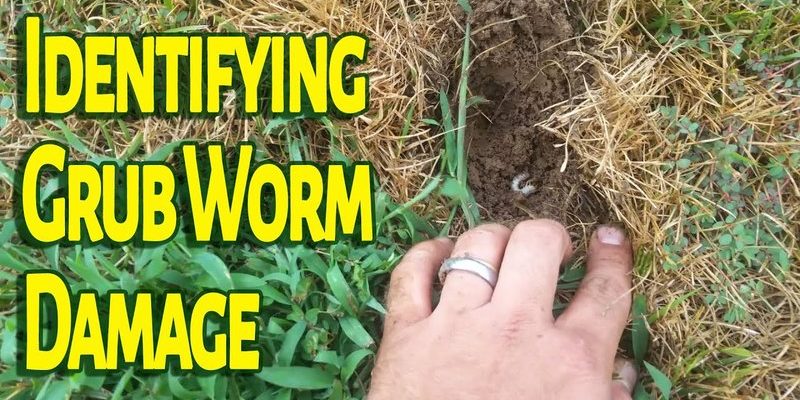
Honestly, it’s easier than you might think! You don’t need to be a professional gardener to learn how to recognize the early signs of grub worms. We’ll explore how to detect these pests, the damage they can cause, and some preventive steps you can take. Let’s dig into this together—pun intended!
What Are Grub Worms?
Before we jump into spotting grub worms, let’s get familiar with what they are. Grub worms are typically white or creamy in color and have a distinct C-shape. They spend most of their lives tucked underground, munching on the roots of your grass. If left untreated, they can turn your vibrant lawn into a sad, brown patch.
Grubs usually hatch in the spring and start feeding right away. Depending on the species, they can grow to about an inch long. Think of them as tiny lawn ninjas—quiet, sneaky, and capable of causing a lot of damage with their relentless munching.
You might be wondering why these little guys matter. Well, they not only kill your grass by eating the roots, but they also attract other pests, like raccoons and birds, that dig up your lawn in search of a meal. Knowing how to identify them early can save you a lot of heartache.
Signs of Grub Worm Infestation
Spotting grub worms before they damage your lawn is crucial. Here are some signs that may indicate a problem:
- Brown Patches: One of the first things you might notice is brown patches in your grass. This can happen when grubs eat the roots, causing sections of grass to die off.
- Easy Uprooting: If your grass comes up easily when you pull on it, that’s a clear sign that roots are being eaten away.
- Animal Activity: Increased visits from animals like raccoons or birds could mean they’re digging for those tasty little grubs. Keep an eye out for their tracks or holes in your lawn.
If you see any of these signs, it’s time to investigate further. Don’t wait for the damage to get worse!
How to Check for Grub Worms
Now that you know what to look for, let’s talk about how to check for them. It’s not difficult, but it does require a bit of digging—literally! Here’s how to conduct a simple grub check:
1. **Choose a Spot**: Pick a small area of your lawn that shows signs of distress, like brown patches.
2. **Dig a Small Hole**: Using a spade or garden trowel, dig about 3-4 inches deep in the selected area. This depth will help you reach where the grubs like to hang out.
3. **Inspect the Soil**: Look for white, C-shaped larvae. You might find 1 to 5 grubs per square foot, which is considered a high population.
If you find more than five grubs in that small area, it’s time to take action.
Preventing Grub Infestation
Prevention is always better than cure! Here are some effective strategies to keep grub worms at bay:
- Healthy Soil: Strong grass grows from healthy soil. Aerate your lawn and consider adding organic matter to improve root growth.
- Regular Mowing: Keep your grass at the proper height. Longer grass tends to be healthier and can resist pest attacks better.
- Water Wisely: Watering deeply but infrequently encourages deep roots, making your grass more resilient to grubs.
- Pest Control Products: Consider using beneficial nematodes, which are tiny worms that attack grubs without harming your lawn.
Here’s the thing: a proactive approach can save you a lot of time and money in the long run. Plus, a thriving lawn can kick grubs to the curb!
When to Treat for Grub Worms
Timing is everything when it comes to treatment. Grub worms are most active during late summer and early fall. That’s when they really start munching away at your grass roots. If you notice any signs of their presence, here’s when you should consider treatment:
– **Early Fall**: This is often an ideal time for applying treatments since the grubs are still in their larval stage and actively feeding.
– **Spring**: If you missed the fall treatment window, spring is another good time to target these pests before they mature and cause more damage.
You might want to consider natural treatments or pesticides, but always follow the instructions carefully. No one wants to harm their lawn while trying to protect it!
Recognizing Lawn Recovery After Grub Treatment
Once you’ve taken steps against grubs, how do you know if your lawn is recovering? After treatment, keep an eye out for:
- Greener Grass: If your grass starts looking greener and healthier, that’s a good sign that the roots are healing.
- New Growth: Look for fresh, new grass sprouting in areas that were previously affected.
- Less Animal Activity: If the critters are no longer digging in your yard, that means the grub situation is improving!
Seeing these changes can be incredibly satisfying. It’s like watching your lawn bounce back from a rough time, and it’s a sure sign that your efforts are paying off!
Final Thoughts on Spotting Grub Worms
Dealing with grub worms may seem daunting, but with the right knowledge, you can spot them before they cause serious damage. Remember to keep an eye out for the signs, check your lawn regularly, and take preventive measures to keep your grass healthy.
A beautiful lawn is not only pleasing to the eye, but it’s also a great space for family fun, relaxation, and enjoyment. So whether you’re a seasoned gardener or a casual lawn lover, being proactive about grub worms will help you maintain that lush green oasis you cherish. Here’s to keeping your lawn healthy and happy!

